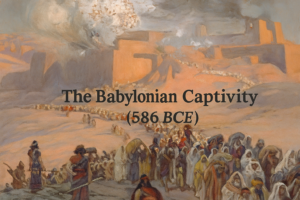The concept of Nirvana, deeply associated with Buddhism, is one of the most profound and enigmatic notions in Eastern spirituality. Derived from Sanskrit, the term “Nirvana” literally means “extinction” or “cessation of the flame.” It is regarded as the ultimate goal of spiritual practice in various Buddhist and Hindu traditions, symbolizing liberation from suffering and the attainment of supreme enlightenment.
Understanding Nirvana:
Often shrouded in mystery and misconception, Nirvana is a fundamental yet complex concept. This article delves into its origins, significance, and role within Buddhist and Hindu philosophies.
Origins of Nirvana:
The roots of Nirvana trace back to ancient India, where diverse religious and philosophical traditions shaped its meaning. Buddhism is most prominently linked with Nirvana. Siddhartha Gautama, the Buddha, attained enlightenment under the Bodhi tree in Bodh Gaya, India, and taught that Nirvana is the ultimate goal of human existence. He emphasized that the cycle of birth, suffering, illness, and death—known as Samsara—can be transcended through the realization of Nirvana.
In Hinduism, Nirvana shares similarities with the concept of “Moksha,” signifying liberation from the cycle of rebirth and unity with the Absolute (Brahman). Texts such as the Upanishads explore the realization of Atman (the individual soul) as a path to attaining Nirvana, which represents oneness with Brahman.
Nirvana in Buddhism:
In Buddhism, Nirvana denotes the liberation from suffering and the achievement of supreme enlightenment. It is not a physical destination but a profound state of being, best understood in terms of what it negates—suffering, desire, ignorance, and the cycle of Samsara.
The Buddha taught that Nirvana is attainable by understanding the Four Noble Truths and following the Noble Eightfold Path. The Four Noble Truths outline the nature of suffering, its causes, its cessation, and the path leading to its cessation. The Noble Eightfold Path comprises ethical conduct, mental discipline, and wisdom, all of which facilitate the realization of Nirvana.
Buddhism distinguishes between two primary types of Nirvana:
- Nirvana with remainder (or residue): Achieved during one’s lifetime, this state occurs when an enlightened individual is free from worldly desires yet still exists in a physical form.
- Nirvana without remainder: Attained at death, this marks complete liberation from all attachments and the cessation of the cycle of rebirth. The Buddha himself reached Nirvana without remainder upon his passing.
Nirvana in Hinduism:
In Hinduism, Nirvana—or Moksha—is the liberation of the individual soul (Atman) from the illusion of separateness and its union with the Absolute (Brahman). Unlike Buddhism, Hinduism upholds the belief in an eternal soul whose ultimate goal is to recognize its divine nature and merge with Brahman.
Different Hindu traditions propose varied paths to attaining Nirvana or Moksha, including:
- Jnana Yoga (Path of Knowledge): Self-inquiry and realization of the true self.
- Bhakti Yoga (Path of Devotion): Surrender and devotion to a deity.
- Karma Yoga (Path of Selfless Action): Acting without attachment to results.
- Raja Yoga (Path of Meditation): Spiritual discipline and meditation.
Hindu texts like the Bhagavad Gita emphasize detachment and selfless action as vital steps toward Moksha.
The Relevance of Nirvana Today:
In contemporary times, the concept of Nirvana continues to inspire spiritual seekers worldwide. Although rooted in ancient traditions, its principles resonate with modern aspirations for peace, mindfulness, and self-discovery. Many meditation practices, mindfulness movements, and philosophical discourses draw inspiration from Nirvana’s ideals, promoting a balanced and meaningful life.
Conclusion:
Nirvana remains a central theme in Eastern spiritual traditions, symbolizing humanity’s quest to transcend suffering and attain inner peace. Whether interpreted as the cessation of rebirth in Buddhism or the union with Brahman in Hinduism, it embodies the ultimate aspiration for enlightenment and liberation. Despite its enigmatic nature, Nirvana continues to inspire countless individuals on their spiritual journeys, serving as a timeless beacon of wisdom and tranquility.










